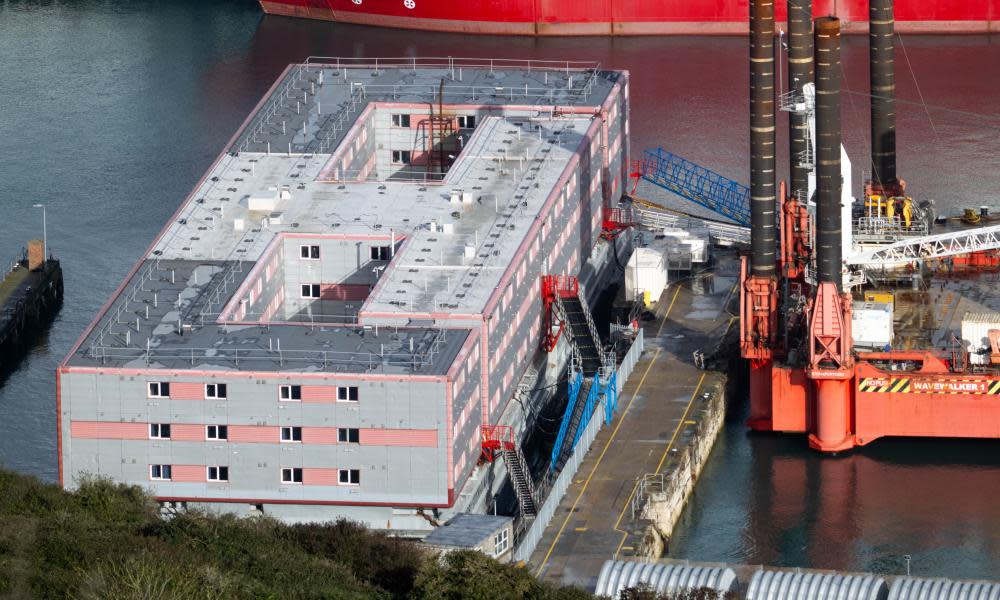Bibby Stockholm: number of asylum seekers to be housed on barge reduced

Questions have emerged over the cost-effectiveness of the Bibby Stockholm barge after the Home Office reduced the number of asylum seekers it plans to house on the vessel.
The floating accommodation for asylum seekers harboured in Portland port, Dorset, was initially supposed to house about 500 people, but the Home Office has reduced this to a maximum of 425.
The Home Office has repeatedly said that the reason for using the barge is to save money on expensive asylum seeker hotel accommodation. But based on the new figure of a maximum of 425 onboard, the barge could work out at 10% more expensive than hotels.
Nicola David from the NGO One Life to Live has carried out research into costings for the barge based on publicly available financial information. Based on the £8m a day figure for hotels and a maximum occupancy level of 425 for the barge, she has calculated that a hotel room per person per day costs an average of £157 while the figure for the barge works out at £172.45 – 10% more.
David said: “Several very credible sources have told me that the cohort on the Bibby Stockholm is to be reduced by around 20% – possibly due to fire safety concerns. Since the vast majority of the barge’s costs are fixed, this is bad news for the cost per head. My calculations, carefully researched over many months, clearly prove that the barge costs more per person than hotels.”
A Home Office spokesperson said: “The Bibby Stockholm is part of the government’s pledge to reduce the use of expensive hotels and bring forward alternative accommodation options which provide a more cost effective, sustainable and manageable system for the UK taxpayer and local communities.
“The capacity of the Bibby Stockholm remains around 500. The number of people onboard the vessel at any one time is likely to vary due to a number of factors, including individuals exiting the asylum system once a decision has been made.”
A document on the government website last updated on 20 October 2023 states that the barge can accommodate about 500 people. This is in line with public statements by the Home Office that the barge would be used to accommodate 506 asylum seekers to save money on the costly £8m a day asylum hotel bill.
However, an internal fire risk assessment from the Home Office’s barge contractor CTM last updated on 2 August 2023 says that while technical capacity is 600, “realistically, since the second floor has been reconfigured and cabin configuration has been determined 425 has been fixed as planned service user occupation”.
The fire risk assessment estimates it will take 5.5 minutes to evacuate 425 people in the event of a fire. It adds that the barge has no lightning protection system and security staff are monitoring the barge round the clock for arson attacks.
Until the Home Office took over the barge it was used to accommodate about 220 people, such as offshore oil workers, with one person per cabin.
A group of asylum seekers supported by local residents have organised a protest outside an Oxford hotel used by the Home Office to accommodate asylum seekers because some have been taken to the barge and others are due to be taken there on Tuesday.
One asylum seeker involved in the protest said many had been in the hotel for a year and had put down roots in Oxford. Many are suffering trauma, some are victims of torture and others fear living on water after dangerous journeys across the Channel and other seas in an attempt to find safety, and fear being sent to the barge.


